The 1990s offered literary texts depicting extraterrestrial invasions, timey-wimey adventures, and imaginings of the dark side of tech. Simultaneously, Hollywood blockbusters began experimenting with “franchise” cinema. The burgeoning of the cyber culture and advances in interstellar travel opened up new worlds for writers, artists and directors to explore—and create works of art that still have a hold on the popular imagination. During this time plenty of speculative fiction novels were adapted into hit films, crafted with cutting-edge special effects that heightened the immersive experience while sci-fi TV shows and video games got their own tie-in books, expanding the shared fictional universe.
Whether you’re up for a nostalgia trip filled with pulp paperbacks and retro graphics, or you’re keen to learn more about '90s nerd culture, this list of eerily prescient sci-fi and fantasy classics is a great place to get started!

Snow Crash
A cyberpunk extravaganza, Neal Stephenson’s Snow Crash is a thrilling novel set in a future neon-lit America where computer viruses and mercenary armies reign supreme. Stephenson draws upon his wide knowledge of linguistics, philosophy, anthropology and computer science to craft an action-packed and thought-provoking work that still remains highly relevant for so many reasons. It even has a “Metaverse”—an internet-based virtual reality where a large portion of the plot unfolds.

The Difference Engine
The “Difference Engine” was originally a mechanical calculator created by Charles Babbage, who is widely regarded as the “father of computers." This landmark novel co-written by two genre giants imagines an alternate Victorian world where Babbage actually succeeds in making mechanical computers. Infused with steampunk elements, the novel examines the social and economic repercussions of such technology upon society, and played a foundational role in defining the steampunk and alternate history genres.
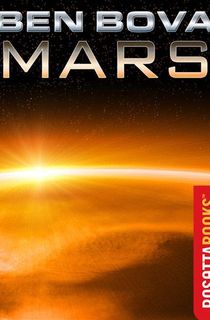
Mars
Despite technological advancements, we haven’t been able to send humans to the red planet yet, so Ben Bova’s Mars safely remains in the realm of science fiction, still. Carefully researched and convincingly written, Mars narrates the story of mankind’s first mission to the red planet. From the grueling training to the discomfort of space travel to the challenges of alien terrain and the political repercussions of such missions, Bova’s vivid account will keep you gripped till the last page.
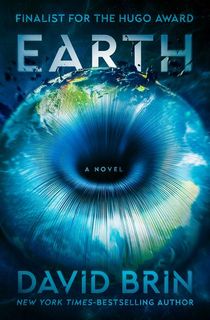
Earth
First published in 1990, David Brin’s Earth unfolds in the year 2038 where an artificial black hole in the Earth’s core has cut short the planet’s lifespan. The dystopian future that Brin depicts is rather prophetic, with the Earth ravaged by ecological disasters, global warming and overpopulation, and living beings rapidly heading for species extinction. Reading this in 2025 will definitely send shivers down your spine at all the things Brin gets right, especially with 2038 fast-approaching with the promise of more catastrophes fueled by climate change unless we take urgent action.
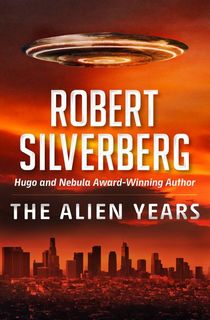
The Alien Years
Extraterrestrial invasions have haunted the popular imagination for over a century since the publication of the full version of H.G. Wells’ War of the Worlds in 1898. Silverberg’s classic novel puts a new spin on alien conquest stories by narrating a tale that spans several generations and depicts the extraterrestrials as seemingly impossible beings. And though the aliens are responsible for heralding a new Dark Age, human resistance still shines through—in a searing and influential tale written in the modern vein.
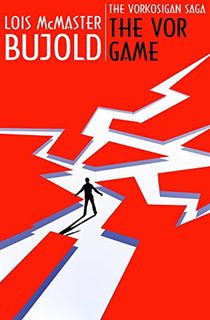
The Vor Game
Lois McMaster Bujold’s work spans both science fiction and fantasy, including the Vorkosigan Saga that has over sixteen books in the series and the World of the Five Gods. The winner of a Hugo Award, The Vor Game is a hugely thrilling military fiction novel about mutinies and secret missions unfolding in the backdrop of an interstellar war. The sixth book in her epic Vorkosigan Saga, The Vor Game is therefore perfect for anyone up for an exciting space adventure.

Jurassic Park
Jurassic Park is a prime example of a highly successful media franchise that began in the 90s that has had an enduring impact on popular culture. Apparently even before Crichton’s novel was published, Universal Pictures and Amblin Entertainment had brought the rights, and Steven Spielberg’s thrilling film adaption catapulted it to stardom. At its heart, the novel is a cautionary tale about genetic engineering gone wrong, following the plight of characters who must escape the genetically recreated dinosaurs that have gone on a terrifying rampage inside the zoo.
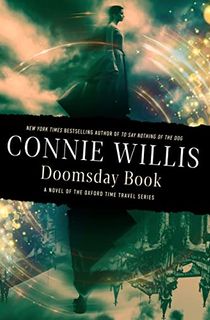
Doomsday Book: A Novel of the Oxford Time Travel Series
The book’s grim title is actually a reference to a manuscript record dating back to 1086, completed at the behest of William the Conqueror—the first hint to the novel’s time travel shenanigans. The book follows Kivrin Engle, an Oxford academic preparing for a trip to the past—only to get stranded in a bygone era and come face to face with the repetitive cycles of history. Thoughtful and engrossing, this one is suited for lovers of time slips and historical fantasy with a slight sci-fi twist.

The Eye of the World
The Amazon Prime TV show, The Wheel of Time (now in its third season) has introduced Robert Jordan’s seminal epic fantasy series to a whole new generation of fans. The novels follow the adventure of Rand al’Thor, the Dragon Reborn—who has been prophesized to defeat the Dark One and save the world, or destroy it—along with other supporting characters. Although the early books are a lil sluggishly paced, the series on the whole promises to be a richly rewarding read, packed with a well-developed magic system, unique fictional subcultures and traditions and plenty of vivid details. Jordan takes inspiration from diverse religions and philosophies to craft a suspense-driven good vs evil tale of mythic proportions. If you have a soft spot for lore-heavy magic and detailed worldbuilding, give the series a try.
Featured image: eddie / Unsplash






